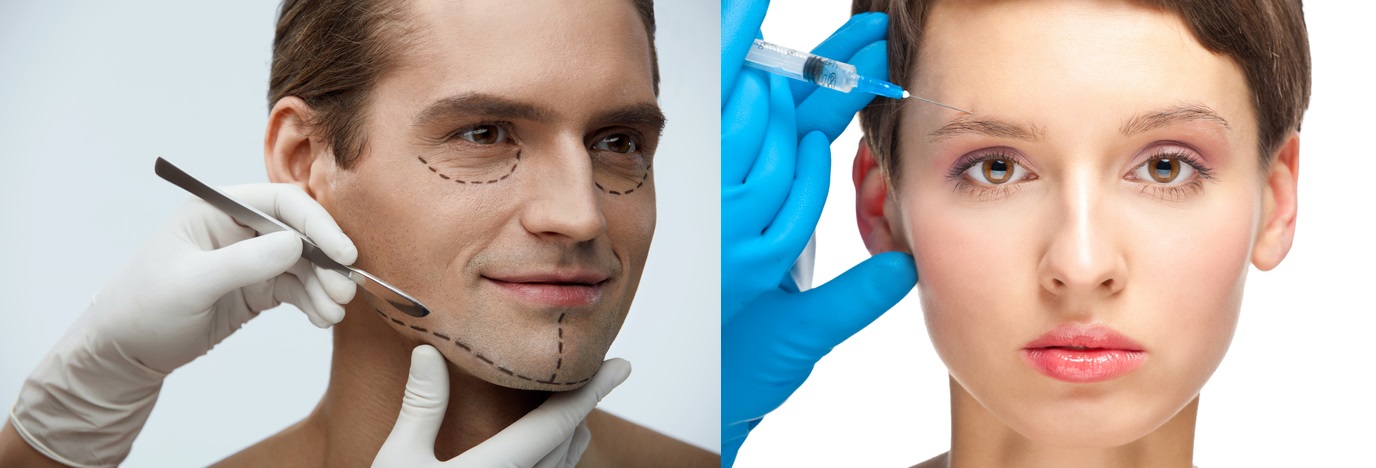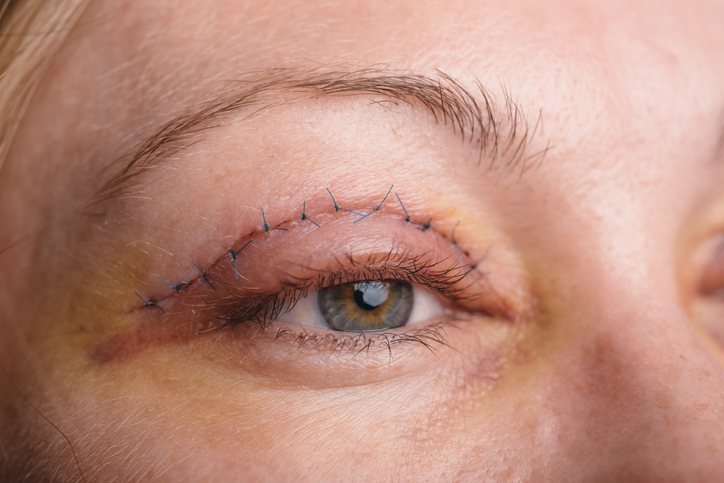- wikiskripta.eu - Ptosis
- healthline.com - What is ptosis?
- medicalnewstoday.com - How do you treat a droopy eyelid?
- aao.org - What Is Ptosis?
- health.harvard.edu - Drooping Eyelid (Ptosis)
Eyelid drooping: why does ptosis, drooping and drooping eyelids occur?

Ptosis, or a droopy and droopy eyelid, is not just an aesthetic problem. It can also be caused by a more serious nervous or vascular disease.
Ptosis of the eyelashes/lid = ptosis palpebrae = blepharoptosis.
Blepharo - related to eyelashes, drooping in the sense of eyelashes.
Drooping eyelid in English.
There are cases where a person is born with droopy eyelids. Then it is a congenital form.
Or...
It arises suddenly from a vascular cause, which can threaten even the health and life of a person in a very short span of time. And especially if it is not addressed in time. Specifically, it is a stroke. At that time, drooping of the corners of the mouth and other neurological manifestations can also be observed.
Then there's the long-term form, where it's a symptom of chronic disease. And that can stem from metabolic or neurological problems.
You are most often interested in:
What is upper eyelid ptosis?
What disease does a droopy and droopy eyelid indicate?
How to remove droopy eyelids (surgical, non-surgical)?
Can exercises help?
What forms of ptosis do we know? + Causes
We know several forms of this problem. Sometimes it is a condition of slight drooping, which is only partial and of more aesthetic, cosmetic importance. There are also more serious cases, when the eyelid covers a significant part of the eye, thus impeding the range of vision. Thus, it impairs vision, sight.
You ask: Does it affect one or both eyes?
Ptosis can occur in one eye or both.
It affects men, women or children. It occurs suddenly, but can develop over a long period of time, from birth. Sometimes it disappears on its own, sometimes it persists...
The congenital form is already present after the birth of the child, when a muscular cause is usually assumed. It is therefore a weakening of the muscle and an underdeveloped upper eyelash elevator (musculus levator palpebrae superioris).
Yet even in this case it can occur during life, as an acquired form.
Of the acquired ones, more conditions can be considered. These may or may not be severe.
An example is a degenerative process that develops over a long period of years during life. The ageing of the organism leaves its traces, for example, on the eyelids, when their drooping causes the release of aponeurosis.
Loosely translated, this is the loosening of the thin connective tissue of the eyelashes, which is instrumental in lifting and normal eyelid function. In this case, muscle function is fully preserved.
This is the most common problem that mainly affects women, and not only from a cosmetic point of view. It is also referred to as age-related drooping of the eyelid.
Very often, drooping of both eyelids is present at the same time.
Apart from the aesthetic aspect, it also causes an overlapping of a substantial part of the eye. Then it limits the range of a person's field of vision and vision.
Furthermore, in addition to the aging of the body, this problem occurs for a number of muscular or nervous diseases. Metabolic or vascular diseases also tend to be the basis.
The table lists 6 forms and some causes of ptosis
| Congenital |
|
| Acquired forms | |
| Aponeurotic |
|
| Neurogenic |
|
| Myogenic |
|
| Mechanical |
|
| Traumatic |
|
Pseudoptosis is another term. It refers to a condition in which the eye is overlapped for reasons other than ptosis. An example is epicanthus, in which the eyelid overlaps the corner of the eye. It also occurs in onophthalmos and in marked facial asymmetry. Onophthalmos is the opposite of exophthalmos (the eye invading the orbit).
In some cases of eyelash drooping, the cause remains unknown.
Summary of causes and risk factors:
- Age and aging
- muscle weakness, dystrophy
- infection and inflammation of the eye, eyelashes
- mechanical cause, excess fat, skin or muscle mass due to various causes such as thyroid or kidney disease
- contact lenses
- excessive rubbing of the eyes
- stroke, aneurysm rupture, cerebral infarction
- myasthenia gravis
- diabetes
- Horner's syndrome
- Bell's palsy - facial nerve palsy/paresis
- tumour, cyst in the eye, eyelid or head/brain
- cataract surgery, laser correction, for example
- trauma
- Lyme disease
- Blepharophimosis-ptosis-inversion-epicant syndrome (BPES syndrome) - hereditary disease
- Botox injections

What other symptoms can they cause?
Ptosis is not just an aesthetic, cosmetic problem. It causes several problems.
Symptoms accompanying eyelash drop:
- drooping, where the eyelid overlaps the pupil
- impaired vision, limitation of the field of vision, in children the risk of blurred vision
- raising of the eyebrows when a person or child tries to raise the eyelid
- head tilting, chin lifting - especially in children, to correct limited vision
- dry eye or, conversely, excessive tearing
- tired eye, eyes
- dull pain in and around the eye
- bags and dark circles under the eyes
- drooping lower eyelid
- psychological problems due to reduced quality of life
- look out for warning signs such as
- headache
- speech impairment
- drooping of the corners of the mouth
- immobility and paralysis of the limbs on one side of the body, weakness on one side of the body
- impaired swallowing
- double vision
- dizziness
- and others
- may indicate a stroke
- especially if the problems develop quickly and suddenly, for example, even from full health
Read also the articles:
- How to recognize a stroke early + Typical symptoms
- How to recognize a heart attack and stroke early?
- Which diseases do lay people often confuse stroke with?
How to treat ptosis? Expertly or non-expertly? Surgically or non-surgically?
These questions belong in the hands of a specialist. He, on the basis of a professional examination, will determine the method to be pursued.
Neglect can lead to complications and deterioration of visual function.
This is especially true in young children, which makes an early approach all the more important in the case of congenital form. In this case, surgical treatment of the fallen eyelids is usually necessary.
In mild forms, which are almost invisible, targeted exercise may help in part. However, this may not always be sufficient.
After weighing up the risks and complications, the specialist will suggest an appropriate course of action.
The first step is to determine the cause. Diagnostics should reveal the reason for the drooping eyelids.
An eye examination is needed (slit lamp examination of the eyelids, visual acuity test). The ophthalmologist may perform a muscle strength test.
+ Examination by a neurologist, imaging methods such as CT or MRI. Plus blood sampling, hormone determination and other special methods to reveal muscle or nervous system function.
History and onset is the basic step, followed by other methods.
And when is surgical treatment necessary?
Not always does the condition require surgical intervention. This is when the so-called non-surgical approach is taken, for example, by exercising and strengthening the muscles.
Another example is the application of an eyelid support, which aims to prevent the eye from overlapping. In this case, the eye must be additionally and sufficiently moistened to prevent the eye surface from drying out.
Poultices can help, for example, from various herbs. Of course, the poultice must be room temperature to prevent injury. An example is chamomile tea, but also other herbs, the effects of which should be discussed with a specialist (for example, in a pharmacy).
A multivitamin, vitamin B12 and a sufficient supply of beta-carotene, lutein, which can be supplemented naturally from the diet (various fruits and vegetables), but also nutritional supplements, will help.
+ Don't forget to give your eyes a rest.
Surgery is necessary if:
- it is a congenital form in children to avoid complications
- the eyelid is drooping so much that it covers the pupil
- an aesthetic problem and significant facial asymmetry is present
- excess skin, muscle and fat - fat pads

Blepharoplasty = correction of upper and lower eyelids and removal of fat bags.
Outpatient, short duration procedure (approximately 2 hours) under local anaesthesia.
In some cases, treatment of the eyebrows is also necessary.
Recovery is short and complications are temporary, rarely permanent (infection, swelling, redness, bleeding, dry eye, eyelid asymmetry, lower eyelid position, visual disturbance and damage to the surface of the eye - rare).
For some it is a permanent remedy, and for others the effect lasts for several years.
Diseases with symptom "Falling eyelids"
Interesting resources










